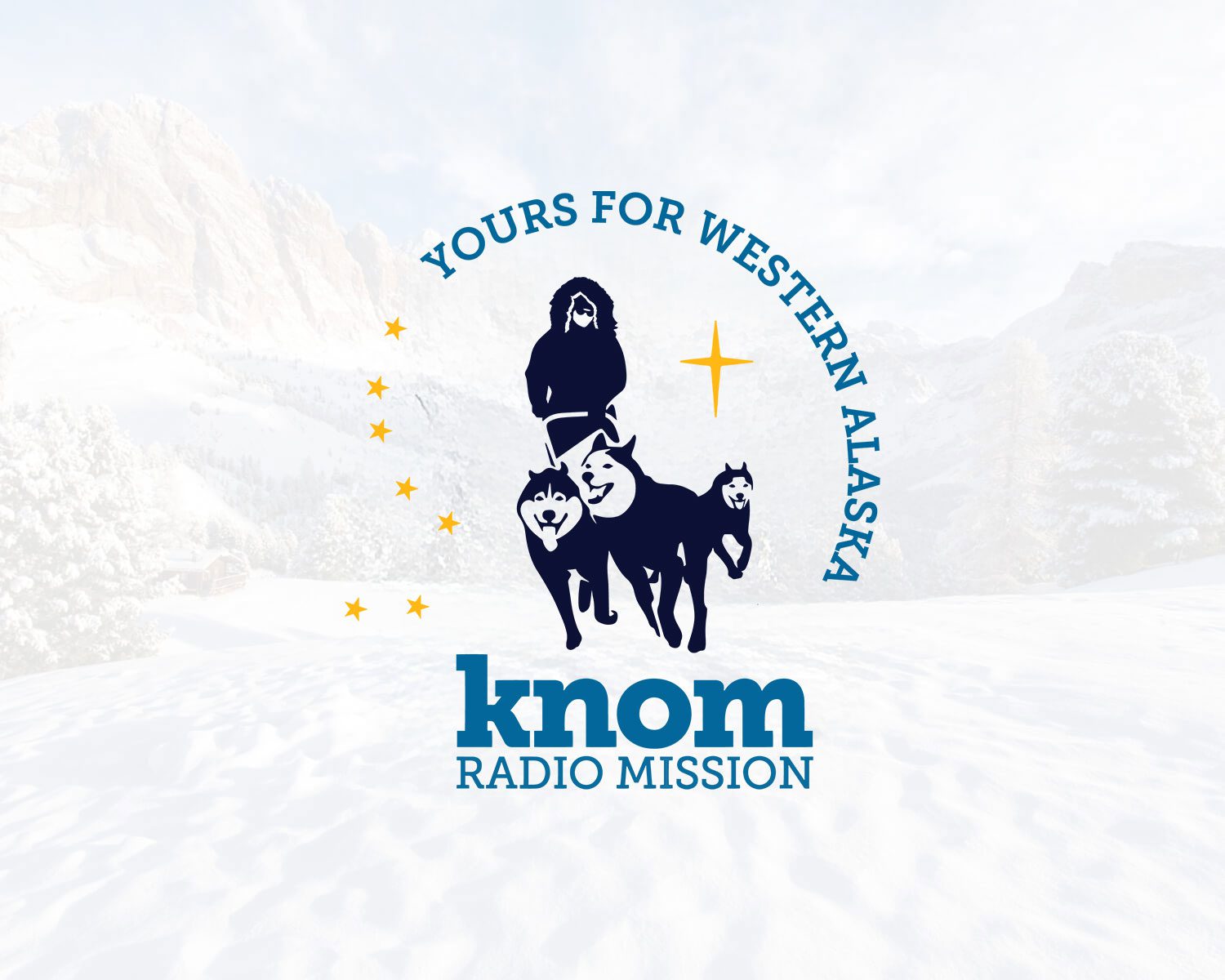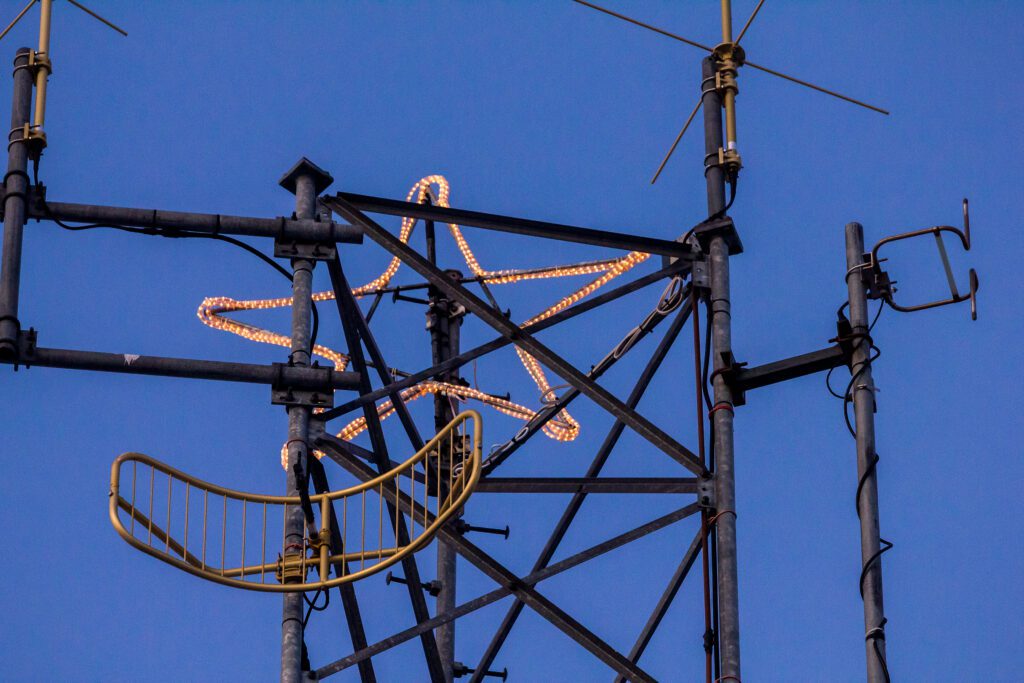January
Vi Waghiyi is featured in Story49. Born in Savoonga, Vi has spent more than 15 years advocating for Alaska Native communities. She works for ACAT, Alaska Community Action on Toxics, a nonprofit that helps communities grappling with environmental contamination. It’s difficult work. “If I didn’t have faith, I couldn’t do this,” she says.


February
Two newly-arrived priests — Frs. Thomas Sagili and Kumar Pasala, both missionaries from India — are now ministering to the faithful in Western Alaska (in person and via weekly KNOM broadcasts of Mass). Their in-person ministry extends well beyond Nome, to seven parishes in total in an area roughly the size of Pennsylvania. Frs. Thomas and Kumar begin offering Mass each Friday at 6:00pm for the intentions of KNOM benefactors.

March
The kind and soft-spoken Norwegian musher Joar Leifseth Ulsom triumphs as Iditarod race champion. On the trail in 2018 are several KNOM volunteer alumni, both as reporters and even as competitors: Tara Cicatello competes as a rookie musher, while news director Davis Hovey works with Alaska Public Media’s Zachariah Hughes (formerly of KNOM) to provide coverage for listeners in Western Alaska.


April
On April 1, KNOM broadcasts Easter Mass live from St. Joseph Catholic Church in Nome. Engineers Van Craft and Les Brown are instrumental in doing maintenance on the church’s radio hardware several weeks beforehand, to make sure the Easter broadcast is as clear as possible. Not just in springtime but all throughout the year, Van and Les are a dynamic duo: helping out with all manner of important technical tasks, both in Nome and from afar.

May
Springtime thaw is in full force in Western Alaska after a winter that saw heavy snowfall — but not nearly enough ice. The wintertime sea ice pack in the Bering Sea had been the lowest in 150 years of record-keeping. In some communities, a staggering lack of sea ice had disrupted daily life. Large gaps of open water (along coasts typically shielded with solid ice in winter) allowed large chunks of ice to blow on shore, damaging homes. The lack of solid ice also thwarted subsistence hunting activities upon which many listeners depend.

June
A series of KNOM spots feature the voices and ideas of Nome first-graders, the fruits of a collaboration between KNOM, Nome Schools, and the National Park Service. Listeners hear the “Nanauyaat Radio Rangers” offer advice such as “keep your house clean, be nice, (and) play with your big brother.” In another feature, listeners meet eight-year-old Haley Evans, who’s volunteered as a “handler” for a Nome sled dog musher since she was only three.

July
With the midnight sun in full force, summer is a great time for maintenance work at KNOM’s facilities. In the Static, readers learn about the installation of a brand-new, Nautel transmitter at the AM tower site. The upgrade is urgent, considering its decades-old ancestor was on the verge of failure. Visits from engineers Les Brown and Van Craft, along with a Nautel tech and a tower crew, help ensure a smooth transition. Father Peter Gorges is on hand to bless the new transmitter, live on KNOM. Les also fixes up the KNOM Christmas star, months before it’s due to be illuminated.

August
“We All Learn Together”: that’s the slogan of an Inupiaq class held in Nome and profiled on KNOM airwaves. “Our language tells us who we are,” reflects one participant. “I really closely associate Inupiaq with memories of my family and memories of fluent speakers that I’ve loved, but I don’t want it to just be in my memory,” says one of the class organizers. “I want to hear it into the future, as well.”

September
The relatively “new” practice of reindeer husbandry (centuries old in Alaska, rather than millennia) may hold promise, say community leaders, as a source of both food and economic independence. “If we did it right, we could become Alaska’s reindeer capital,” says Savoonga tribal chief Delbert Pungowiyi. A “mobile processing plant” on loan from the University of Alaska sparks hopes of a renaissance in reindeer herding.

October
Western Alaska youngsters continue to amaze, and not just in Western Alaska. An episode of Story49 introduces Lisa Lynch, a Nome-raised young adult and Miss Arctic Native Brotherhood, currently majoring in classical studies and art history at John Cabot University in Rome. Caught Doing Something Good showcases high school freshman Andrew Hafner, a multi-instrumentalist and thespian who’s acted in several Shakespeare plays.


November
“Let us not look to the future with negativity or frustration but with happiness and hope.” So says Jacob Iya, a high school senior in Savoonga, regarding the staggeringly high rates of overcrowding in his hometown (61%, compared with 2% of American households overall). A KNOM News story explores the multiple dimensions of the overcrowding problem that, in some cases, has 21 people living in a small home with three bedrooms.

December
Good news is in the air! The village of Diomede, for the first time ever, will be included in the FAA’s Essential Air Service program. The federal support will help ensure more regular air passenger service to the remote island community. Back in Nome, high atop KNOM’s FM tower, the Christmas Star beams brightly throughout the Advent and Christmas seasons. On Christmas Day, the station broadcasts Mass live from Nome’s historic “Old St. Joe’s” church.

Image at top: Volunteer fellow Katie Kazmierski helps deejays and visitors get into the Christmas mood by decorating KNOM’s main broadcast space, Studio A. Photo: Margaret DeMaioribus, KNOM.







